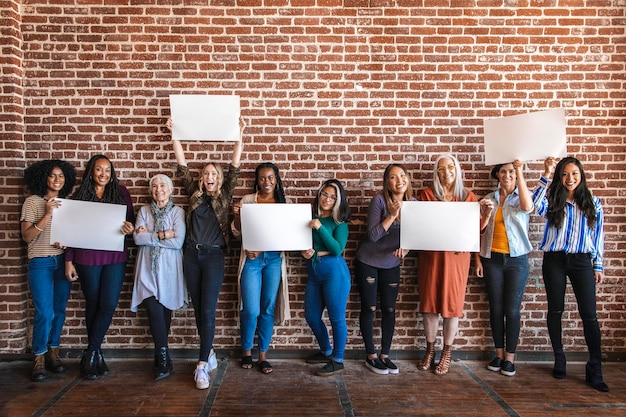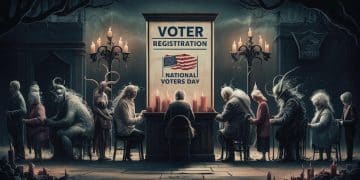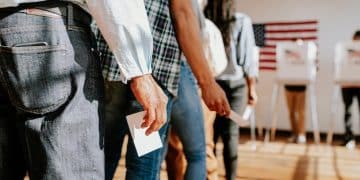How New Voting Laws Impact Voter Turnout in the Next Election

How the New Voting Rights Legislation Could Affect Voter Turnout in the Next Election is a crucial question as new laws are debated and implemented across the US, potentially altering who can vote and how easily they can do so. These changes can have significant effects on election outcomes.
The landscape of voting rights in the United States is constantly evolving. As new voting rights legislation is introduced and implemented across various states, a critical question arises: how the new voting rights legislation could affect voter turnout in the next election? These laws, which can range from voter ID requirements to changes in early voting options and registration processes, have the potential to significantly reshape the electorate and influence election outcomes.
Understanding the potential impacts of these legislative changes is essential for ensuring fair and accessible elections. Let’s explore how these new rules could change who votes and how easily they can do so.
Understanding the Evolving Landscape of Voting Rights
Voting rights in the United States have been a contentious issue throughout history. The introduction of new voting rights legislation is often framed as an effort to enhance election integrity, while critics argue that such changes can disproportionately affect certain demographics and suppress voter turnout. Examining the history and current context of these debates helps to understand the potential consequences.
Historical Context
The fight for voting rights in the US has been long and arduous, marked by significant legislative milestones such as the Voting Rights Act of 1965. This landmark legislation aimed to overcome legal barriers at the state and local levels that prevented African Americans from exercising their right to vote, guaranteed under the 15th Amendment to the Constitution.
Current Debates
Today, debates around new voting rights legislation often revolve around issues of voter ID requirements, registration processes, and access to polling locations. Proponents of stricter laws often argue these are necessary to prevent voter fraud, while opponents contend that they create unnecessary hurdles for eligible voters.
- Voter ID Laws: Requirements for specific forms of identification at polling places.
- Registration Processes: Changes to registration deadlines and permissible forms of registration.
- Polling Locations: Decisions regarding the number and location of polling places.
These debates set the stage for understanding how the new voting rights legislation could affect voter turnout in the next election and what these disputes are really about.

In conclusion, the discussions surrounding voting rights continue to be a pivotal part of American politics. Understanding the historical context and the current debates is crucial for any analysis of how the new laws could affect who gets to vote and how easily.
Specific Examples of New Voting Rights Legislation
To fully grasp how the new voting rights legislation could affect voter turnout in the next election, it is important to look at specific examples of laws being enacted at the state level. These examples can illustrate the different approaches states are taking and their potential impacts.
Restrictive Laws
Some states have introduced laws that add new restrictions to the voting process. These may include:
- Stricter Voter ID Requirements: This could involve requiring specific forms of photo identification that some voters may not possess.
- Limitations on Early Voting: Reducing the number of days or hours available for early voting.
- Purging of Voter Rolls: More aggressive efforts to remove inactive voters from registration lists.
Expansive Laws
Conversely, other states have sought to expand access to voting through measures such as:
- Automatic Voter Registration: Registering eligible citizens to vote when they interact with government agencies, unless they opt out.
- Same-Day Voter Registration: Allowing individuals to register and vote on the same day.
- Expanded Early Voting Options: Increasing the number of early voting locations and extending the timeframe for early voting.
Exploring both restrictive and expansive laws gives us insight into How the New Voting Rights Legislation Could Affect Voter Turnout in the Next Election, and if these law changes are making it easier, or harder, for people to make their voices heard.
Understanding these specific examples provides a clearer picture of the diverse legislative changes occurring across the country and enables a more informed evaluation of their potential consequences.
Analyzing the Potential Impact on Voter Turnout
The central question remains: exactly how the new voting rights legislation could affect voter turnout in the next election? Researchers and analysts have explored this issue extensively, offering various perspectives on the likely impacts. The effects of these laws can vary depending on the specific provisions and the demographics of the affected areas.
Potential for Suppression
Studies have suggested that restrictive voting laws can lead to lower turnout, particularly among minority voters, young voters, and low-income individuals. These groups may face disproportionate challenges in complying with new requirements.
Mobilization Efforts
In response to these challenges, various organizations and advocacy groups are working to mitigate the potential for voter suppression through:
- Voter Education Campaigns: Informing voters about new requirements and how to comply with them.
- Registration Drives: Encouraging eligible citizens to register to vote, especially in underserved communities.
- Legal Challenges: Filing lawsuits against laws deemed to be discriminatory or overly burdensome.
It’s also important to recognize the unintended implications of How the New Voting Rights Legislation Could Affect Voter Turnout in the Next Election – with some people more motivated to vote out of spite.

Whether the impacts will ultimately suppress or mobilize remains a subject of ongoing debate and research, highlighting the complexities of election law.
The Role of Voter Education and Engagement
In light of new voting rights legislation, voter education and engagement play a crucial role in ensuring every eligible citizen can exercise their right to vote. Effective voter education efforts can help bridge knowledge gaps and overcome potential barriers, in turn, affecting how the new voting rights legislation could affect voter turnout in the next election.
Key Educational Initiatives
Successful voter education initiatives often involve partnerships between community organizations, election officials, and advocacy groups. These partnerships leverage diverse resources and networks to reach a broad range of voters. Key initiatives include:
- Workshops: Educational workshops guide voters on how to complete their voter registration and vote using new procedures.
- Informational Materials: Distributing voter guides and factsheets in multiple languages is frequently required.
- Social Media Campaigns: Social media is used to create awareness, get registration information to voters, and answer questions.
Effectively informing voters about the changes to voting legislation is a key component in ensuring that they are ready to vote. Without proper voter education, potential voters may be disenfranchised from the election.
Grassroots Movements
The success of voter education efforts often hinges on the strength and reach of grassroots movements.
- Community Leaders: Local community leaders can help to reach underinformed voters and spread awareness.
- Targeted Messaging: Ensuring that voter awareness campaigns target individuals who could face increased risks to get out and vote as a result of the legislation
- Consistent Outreach: Community members must consistently engage in outreach campaigns to ensure that voters are informed of the changes to their voting laws in advance of the election.
It is vital that communities across the country focus on voter education so that citizens can stay informed of the laws and processes influencing how the new voting rights legislation could affect voter turnout in the next election.
Future Trends and Potential Reforms
The debate over voting rights is far from settled, pointing toward several future trends and potential reforms worth considering. Understanding these future directions can better prepare us for how the new voting rights legislation could affect voter turnout in the next election years from now.
Potential Federal Legislation
The possibility of federal legislation to protect and expand voting rights remains a significant topic of discussion. Such legislation could establish national standards for voting access.
Technological Innovations
Technological innovations could also play a role in shaping the future of voting rights.
- Online Voter Registration: Expanding access through user-friendly online platforms.
- Secure Electronic Voting: Exploring secure and verifiable electronic voting systems.
- Digital Voter Education: Developing interactive tools and resources to educate voters online.
Future advancements in voter accessibility will be key in making casting a vote easier for Americans, affecting how the new voting rights legislation could affect voter turnout in the next election.
Advocacy and Legal Action Trends
There are several ongoing actions being conducted by advocacy groups and legal teams across the country, all looking at how the new voting rights legislation could affect voter turnout in the next election and how they can drive change towards better access to the right to vote.
- Increased Litigation: Expect more legal challenges to restrictive voting laws.
- Collaborative Advocacy: Community-based organizations and outreach volunteers pushing to create opportunities for people to vote and be heard.
- Policy Task Forces: Pushing for laws and legislation that make it easier for Americans to vote, and drive voter education campaigns to make sure every American understands how they can excercise their right to vote.
| Key Consideration | Brief Description |
|---|---|
| 🗳️ Restrictive Laws | Can decrease voter turnout, especially among minorities and low-income voters. |
| 📚 Voter Education | Crucial in ensuring all eligible citizens can exercise their right to vote. |
| ⚖️ Legal Challenges | Play a key role in opposing restrictive voting measures. |
Frequently Asked Questions
Voter ID laws, requiring specific identification at polling places, can reduce turnout, particularly among minority and low-income voters who may lack required IDs.
Automatic voter registration registers eligible citizens when they interact with government agencies, unless they opt out, increasing registration rates and potentially turnout.
The changes in legislation will likely cause varying impacts around the country based on the specific measures enacted. There is the risk that they could reduce access and thus voter turnout for some citizens.
Voter education campaigns aim to inform voters about new requirements, registration deadlines, and voting procedures to ensure they can exercise their right to vote effectively.
Same-day voter registration allows individuals to register and vote on the same day, increasing access and turnout, especially among young and newly eligible voters. Legislation may be impacted dependent on how easy same-day registration is.
Conclusion
The evolving landscape of voting rights ensures that how the new voting rights legislation could affect voter turnout in the next election remains a critical question. New laws are constantly being debated, with some making it easier to vote and other restricting access. Voter education and engagement are key to making sure every citizen can cast their ballot.





